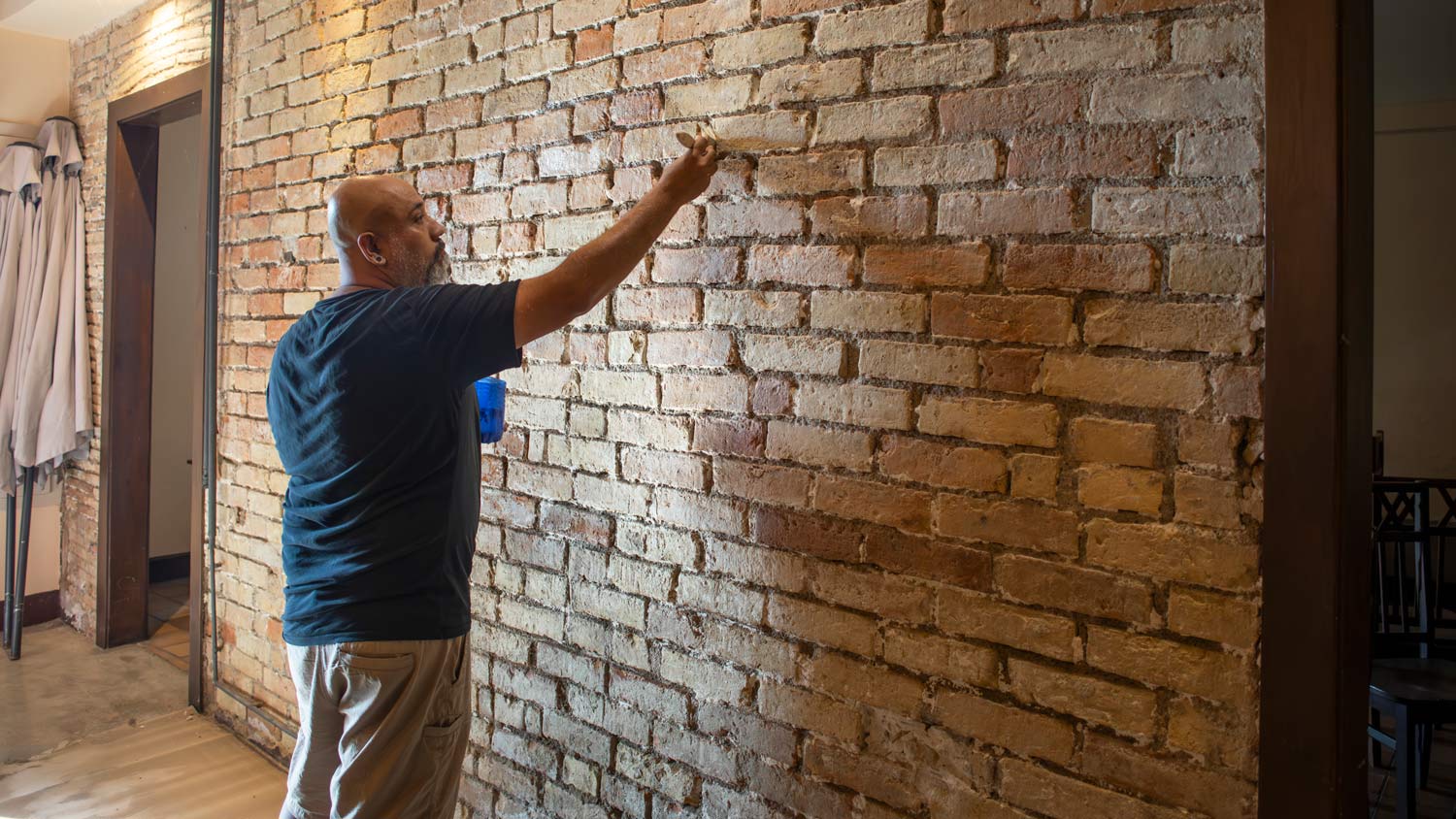Can Brick Be Stained on the Inside or Outside of Your Home?
A little facelift can go a long way


You can stain your home’s brick to refresh the color.
Cleaning the brick properly first is key.
Always use a sealant as the final step to ensure longevity.
If you’re looking to freshen up the appearance of your home’s brickwork, you may wonder—can brick be stained? With the proper preparation and the right type of masonry stain, you can indeed stain your home’s bricks to give them an impressive makeover. Here’s what to know about staining brick like a pro.
Common Things to Know About Staining Bricks

Before you kick off a brick staining project, it’s important you prepare the right way.
Preparation is key: Clean the brick thoroughly. Remove any dirt, debris, loose mortar, or previous coatings. A pressure washer is often the best tool for this. Allow the brick to dry completely before staining.
Sealing makes all the difference: Some interior or exterior brick stains benefit from a sealant applied after the stain has dried. This can provide added protection against the elements and make the color last longer.
How to Properly Stain Bricks in Your Home

Staining bricks involves more than just applying a coat of paint. It's about penetrating the brick's porous surface to create a long-lasting, natural-looking color.
First, you need to choose the right stain. Brick stains are specifically formulated to penetrate and bond with the brick. They are different from normal exterior or interior house paints, which sit on the surface and can peel or flake. Choose a stain designed for masonry and consider whether you want a solid color or a more transparent look. Test the stain in an inconspicuous area first to ensure you achieve the desired color.
Once you are ready to apply the stain, you can do so with a brush, roller, or sprayer. Multiple thin coats are better than one thick coat. This allows for even coverage and better penetration. Follow the manufacturer's instructions for drying times between coats to achieve the best effect.
How to Remove Brick Stain
Whether it's a spill or an attempt to reverse a previous staining project, removing brick stains can be a challenge. Here’s how you can remove brick stain:
Identify the stain: Knowing the type of brick stain you’re removing (e.g., oil-based, water-based, masonry stain) is crucial for choosing the right removal method.
Start gently: Begin with the least abrasive cleaning method possible. Try scrubbing with a stiff brush and a mild detergent solution.
Use chemical cleaners: If gentle methods fail, you may need to use a chemical cleaner specifically designed for removing brick stains. Always test the cleaner in a discreet area first to avoid damaging the brick. Follow the manufacturer's instructions carefully and wear appropriate safety gear, like rubber gloves, a mask, and eye protection.
Seek professional help: For stubborn stains or if you're unsure about the best approach, it's always best to consult a home painting company near you. These professionals have the expertise and specialized equipment to remove stains safely and effectively. They can also advise you on the best long-term solutions to protect your brick.
Frequently Asked Questions
Staining brick is a fun and cost-effective way to refresh existing brickwork without the expense of replacing it. It can help blend mismatched bricks, create a more cohesive look, or even mimic the appearance of aged or weathered brick. However, it's crucial to consider the brick's existing condition before you kick off the staining process. Proper preparation and application are key to a successful and long-lasting result.
If you want to avoid damaging your home's brick, you should always use a stain specifically formulated for masonry projects. These stains are designed to penetrate the porous surface of the brick and bond with it, unlike paints, which sit on the surface and are prone to peeling and flaking. Look for stains labeled for use on brick or other masonry surfaces. Avoid using regular paint on brick, as it will not adhere well and will likely lead to future maintenance issues.
A good quality masonry stain can last for 10 to 20 years, or even longer in some cases. The longevity of brick stain depends on several factors, including the quality of the stain, the preparation of the brick before staining, and the level of exposure to the elements. However, high-traffic areas or areas exposed to harsh weather conditions may require more frequent touch-ups. Properly cleaning the brick before staining and applying the stain according to the manufacturer's instructions is crucial for maximizing the lifespan of the stain, as is applying a sealant as the final step.













